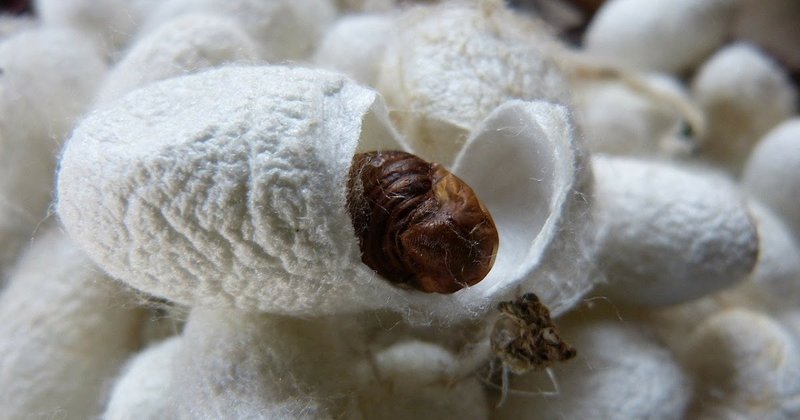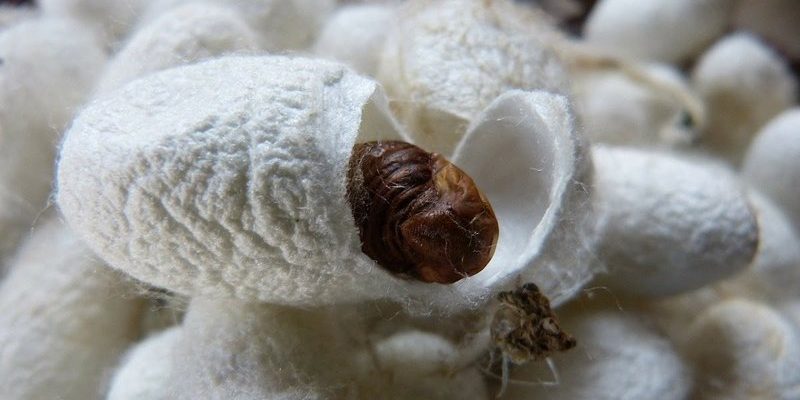
Imagine for a moment that you’re sipping coffee with a friend who’s curious about this process. You’d probably start with the basics: the silkworm, specifically the *Bombyx mori*, is a caterpillar that spins a cocoon to protect itself as it transforms into a moth. Traditionally, the extraction process often meant boiling the cocoons, which sadly meant harming the developing pupae inside. However, innovative methods have emerged that allow us to collect silk while keeping these cute little guys safe and sound. Here’s how it all works.
The Life Cycle of a Silkworm
Before diving into the silk extraction process, it’s important to understand the life cycle of a silkworm. These creatures start as tiny eggs, which hatch into larvae (the silkworms we know) that feast on mulberry leaves. They munch away and can grow quite large! In just a few weeks, they’re ready to spin their cocoons.
Once the silkworm spins its cocoon, it goes through a metamorphosis. Inside that protective casing, it transforms into a moth. *Here’s the thing*: this process takes about two to three weeks. Understanding this lifecycle helps highlight why it’s so crucial to extract silk gently and sustainably. We’re not just dealing with threads; we’re interacting with living creatures.
Traditional Silk Extraction Methods
Historically, the most common method of silk extraction involved boiling the cocoons to kill the pupae inside. While this technique provided high-quality silk, it raised significant ethical concerns. Imagine being trapped in a shell, only to have someone turn up the heat! For many, this method just didn’t sit right.
This practice is still prevalent in some places due to its efficiency and the quality of the silk it produces. However, it’s important for anyone interested in silk to consider the broader implications of these methods. With a growing awareness about animal rights, more sustainable practices are emerging to minimize harm to the silkworms.
Ethical Alternatives: How to Harvest Silk Responsibly
As demand for ethical practices grows, so does innovation! One of the primary methods of extracting silk without harming the moths involves gathering cocoons after the moths have already emerged. Yes, that’s right! Instead of boiling, farmers can wait until the moths leave their cocoons, and then collect the silk.
This method allows the silkworms to complete their life cycle and emerge as beautiful moths. After they’ve left, the cocoons can still be harvested for silk without any harm done. The quality of the silk might differ slightly in terms of durability, but many consumers prefer this method for its ethical implications. So, if you’re thinking about purchasing silk, looking for brands that prioritize these practices can make a difference.
Silk Extraction Techniques: Step-by-Step
Let’s break down the process of extracting silk without harming the moths. You might be wondering: how exactly does this work? Here’s a simple outline:
- 1. Rearing Silkworms: Farmers raise silkworms in a controlled environment, ensuring they have plenty of mulberry leaves to eat.
- 2. Spinning cocoons: Once they’re ready, silkworms spin their cocoons, which can take several days.
- 3. Wait for emergence: Farmers patiently wait for the moths to hatch from their cocoons. This might take about 10 days after the spinning stops.
- 4. Collecting cocoons: After the moths have emerged, the empty cocoons are collected for silk extraction.
- 5. Silk processing: The collected cocoons are then washed and sorted to extract the silk threads.
By following these steps, farmers can gather silk while allowing the moths to live their life cycles. It’s a win-win situation that supports both traditional practices and animal welfare.
The Benefits of Ethically Sourced Silk
Choosing silk harvested without harming moths not only supports humane practices but also helps foster a more sustainable textile industry. Here are a few benefits of opting for ethically sourced silk:
1. Animal Welfare: It’s simple—by allowing moths to live, you’re supporting animal rights.
2. Quality: Many consumers find that ethically harvested silk has a unique texture and feel, often considered more luxurious.
3. Environmental Impact: Sustainable practices can reduce waste and promote healthier ecosystems, benefiting the surrounding environment.
By supporting brands that prioritize these ethical methods, you’re not just buying a product; you’re becoming part of a movement toward more humane practices in fashion.
In a world where our choices impact the environment and animal welfare, understanding how silkworm silk is extracted without harming moths is crucial. It’s not just about the fabric; it’s about the life behind that fabric. By choosing ethically sourced silk, you’re supporting a balance between nature and human needs.
So, the next time you admire a beautiful silk garment, think about the journey it took to get there—one that respects the silkworm’s life cycle. Embracing these practices not only results in beautiful fabrics but reflects a commitment to a kinder world. You might say it’s the fabric of compassion woven into every thread!

